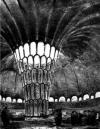Abstract
rationalism, geometric abstraction, purism of forms, functionalism, etc. These concepts are considered to representthe architectural production, thus neglecting the fundamental importance of emotion and intuition in the processof architectural composition. Without doubt, this is the result of the predominant line in European modernist historiography,which avoided or minimized the role of the senses and of intuition when new spaces and materials werebeing proposed.The direct influence of persons such as Eugenio Steinhof, Dutch and German expressionism and (in a less directway) the works of F. L. Wright, which were known through publications such as Wendingen -that represented theexpressionist movements- urges reflections from an alternative point of view. It is necessary to consider the searchfor new spaces, new forms and new materials that comes forth with the modernist´s intellectual development inLatin America and specifically in Uruguay.Apuntes is registered under a Creative Commons Attribution 4.0 International Public License. Thus, this work may be reproduced, distributed, and publicly shared in digital format, as long as the names of the authors and Pontificia Universidad Javeriana are acknowledged. Others are allowed to quote, adapt, transform, auto-archive, republish, and create based on this material, for any purpose (even commercial ones), provided the authorship is duly acknowledged, a link to the original work is provided, and it is specified if changes have been made. Pontificia Universidad Javeriana does not hold the rights of published works and the authors are solely responsible for the contents of their works; they keep the moral, intellectual, privacy, and publicity rights.
Approving the intervention of the work (review, copy-editing, translation, layout) and the following outreach, are granted through an use license and not through an assignment of rights. This means the journal and Pontificia Universidad Javeriana cannot be held responsible for any ethical malpractice by the authors. As a consequence of the protection granted by the use license, the journal is not required to publish recantations or modify information already published, unless the errata stems from the editorial management process. Publishing contents in this journal does not generate royalties for contributors.


